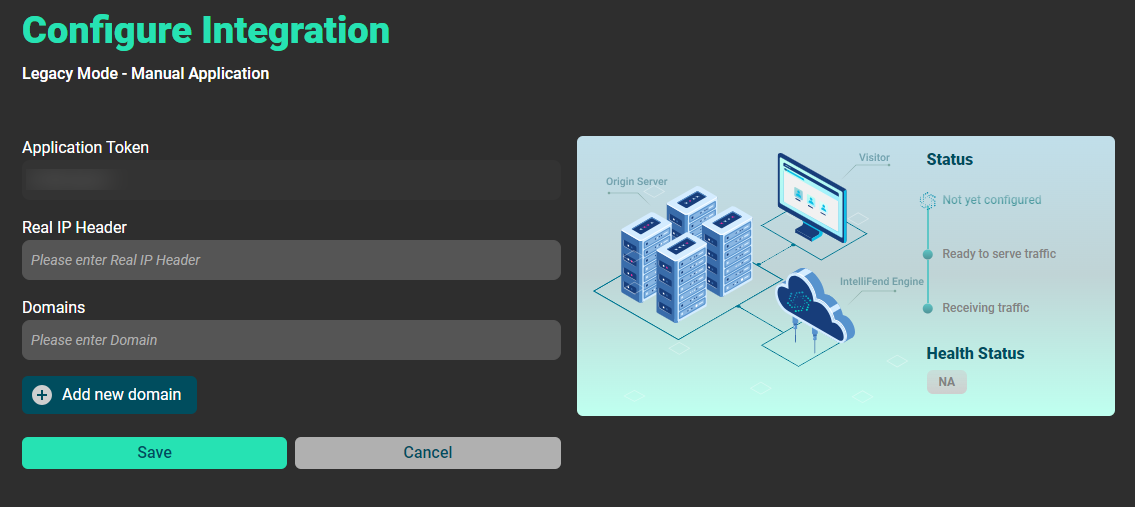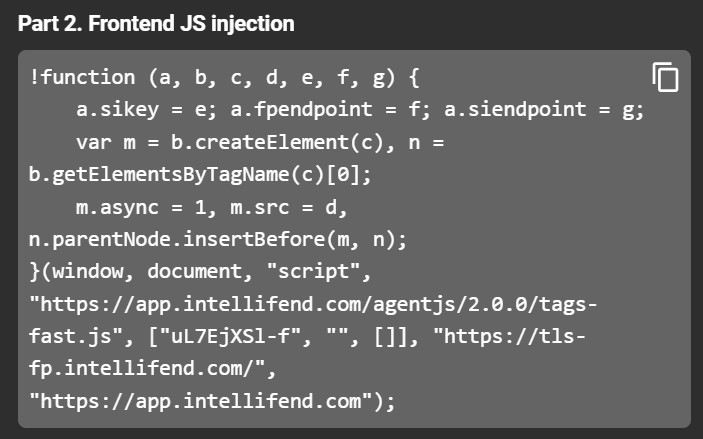Manual Mode
In Manual mode, NGINX configuration is leveraged to forward access logs to the IntelliFend server for comprehensive analysis, allowing you full control over the specific traffic you wish to monitor. In contrast to other modes, Manual mode does not apply any mitigation actions to your traffic. Alternatively, you can use the IntelliFend API to obtain a detailed bot list and implement custom mitigation strategies on your end.
The following procedure describes the high-level steps for setting up an integration:
- Generate sample Nginx configuration in IntelliFend Back Office
- Modify the Nginx configuration in your application
- Add AgentJS script to your HTML source code
Step 1: Generate sample Nginx configuration in IntelliFend Back Office
To generate the sample Nginx configuration, follow the below steps:
- Go to the IntelliFend Back Office page, and click Integration in the left navigation pane.
- Click on the application name that you want to integrate. Please make sure that its integration mode is Manual.
If you do not have the desired application, you can contact us to create one.
-
Provide your information in the integration form.
- Application Token: This field shows your application’s token, and it is automatically generated by IntelliFend.
- Real IP Header: Specify the header name to get the real IP Address.
- Domain: Enter your application domain. Click the Add new domain button to add more if your application has multiple domains.
-
Click the Save button to generate the sample NGINX configuration.

Step 2: Modify the Nginx configuration in your application
After successfully generating the sample Nginx configuration in our Back Office, you are required to modify the Nginx configuration on your end to forward access logs to the IntelliFend server.
The sample Nginx configuration is shown in the Integration Details page – Configuration Information section – Part 1. Collect Traffic Log, which is displayed after you save the integration successfully. You can access this page later by going to Integration in the left navigation pane and clicking on the app name that you have configured for the integration.

Step 3: Add AgentJS script to your HTML source code
After successfully generating the sample Nginx configuration in our Back Office, the AgentJS script will be shown on the Integration Details page – Configuration Information – Part . Frontend JS injection. Please add it to your HTML source code to collect the user's browser events and generate Visitor IDs for tracking and monitoring. For more information about the AgentJS script, please refer to AgentJS Script

To prevent your health check traffic from being flagged as bot activity. After successfully configuring the integration, you can append the Stealth ID parameter '_intellifend' - available on the Integration Details page - to your health check URL.